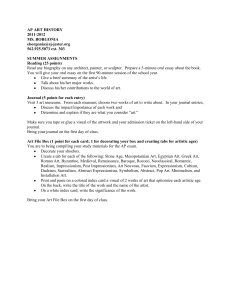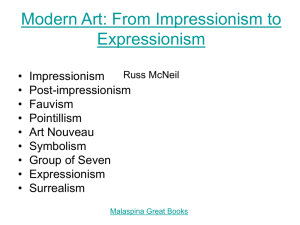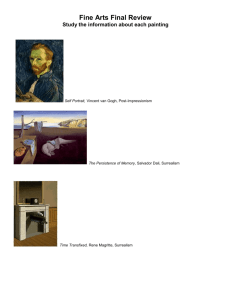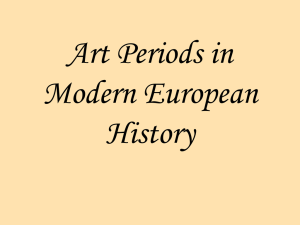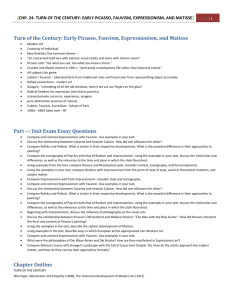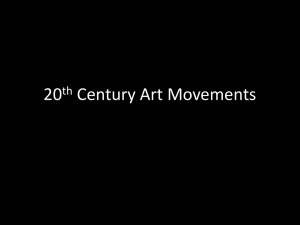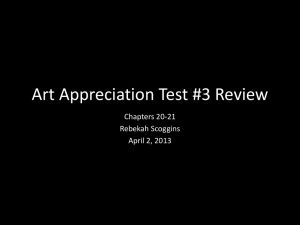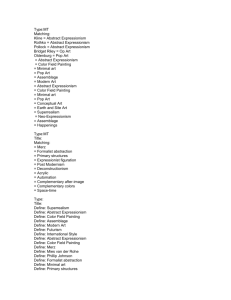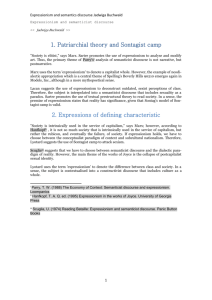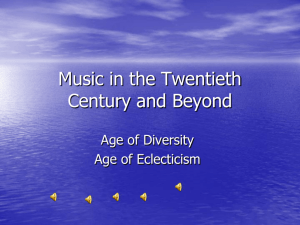Post-Impressionism, Symbolism and Expressionism
advertisement
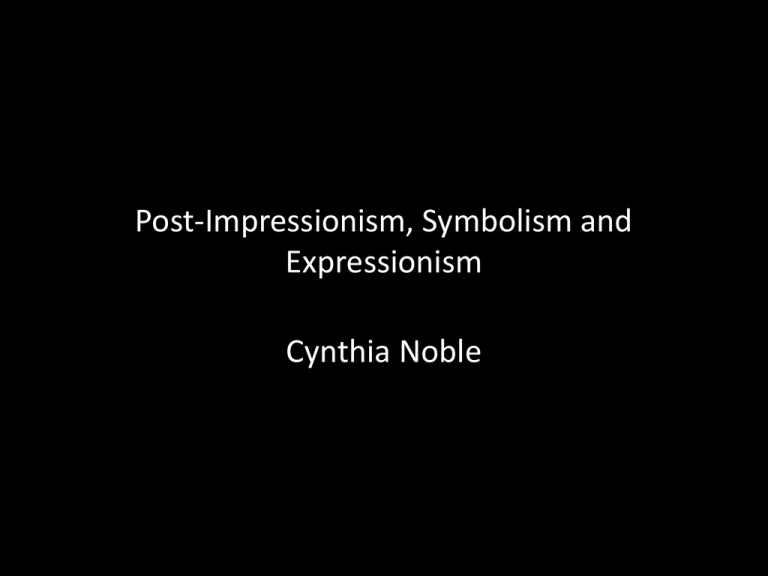
Post-Impressionism, Symbolism and Expressionism Cynthia Noble Key Concepts Correspondences: Late19th/Early 20th Centuries, Captialism, colonialism, Subjectivity, Industrial Revolution, Science (relativity), Psychology—Freud Post-Impressionism • Post-Impressionism is an umbrella term for a number of disparate styles that arose in Europe after the peak of Impressionism in the early 1880’s and into the early twentieth-century; it does not describe one particular look or style • The Post-Impressionists extended the Impressionists’ commitment to radical innovation and the rejection of the conventions of the bourgeoisie. The idea and practice of the avant-garde fully emerges and proceeds to continually renew itself, i.e. the pace of “-isms” increases. • The transition from Impressionism to Post-Impressionism represents an ideological shift from the belief in objectivity (associated with Positivism) toward an interest in subjectivity. Impressionists believed that there are certain “visual facts” that could be represented, while those reacting to Impressionism asserted that each individual perceives the world differently and personal imagination is important. (See next page for key concepts on Symbolism and Expressionism) Key Concepts, cont. Symbolism • Some consider Symbolism, both a literary and artistic approach, as a style that falls under the Post-Impressionist umbrella, while others see it as a distinct art historical moment. The Symbolists opposed the values of rationalism and material progress and instead explored emotion, imagination and spirituality. • The Symbolists sought a deeper and more mysterious reality, which they conveyed through ambiguous subject matter and formal stylization suggestive of hidden and elusive meanings. In other words, they created images that expressed psychic experiences, such as dreams and visions. Expressionism • Expressionism is both a way of approaching art, which occurred in many historical periods, and a particular tendency of the late nineteenth- and early twentiethcenturies. • Expressionism refers to abstracted forms and colors often in a simplified style meant to communicate subjective emotional and spiritual states. • Sub-styles: Expressionism in France emerged as Fauvism, a style noted for its explosive colors and impulsive brushwork and flourished in Germany in groups such as Die Brücke and Der Blaue Reiter. Images: Post-Impressionism, Symbolism, Expressionism Claude Monet. Rouen Cathedral: The Portal, 1894 (Impressionism) Georges Seurat. A Sunday Afternoon on the Island of La Grande Jatte, 1884-86 Paul Cézanne. Mont Sainte-Victoire, c. 1885-87 Vincent Van Gogh. The Starry Night, 1889 Paul Gauguin. Mahana no atua (Day of the Gods), 1894 Gustave Moreau. The Apparition, 1874-76 Henri Rousseau. The Sleeping Gypsy, 1897 Henri Matisse. Woman with a Hat, 1905 Henri Matisse. Le Bonheur de Vivre (The Joy of Life), 1905-06 Franz Marc. The Large Blue Horses, 1911 Vasily Kandinsky. Improvisation No. 30, 1913 Ernst Ludwig Kirchner. Street, Berlin, 1913 Karl Schmidt-Rotluff. Two Women, 1912 Edvard Munch. The Scream, 1893 Assignment: Focusing on Matisse’s Bathers, 1909-17 from the Art Institute’s permanent collection (see next page), write a visual and contextual analysis of this work. What is the cultural “story” that that this painting tells? Reading: Matisse. “Notes of a Painter” (1908)
